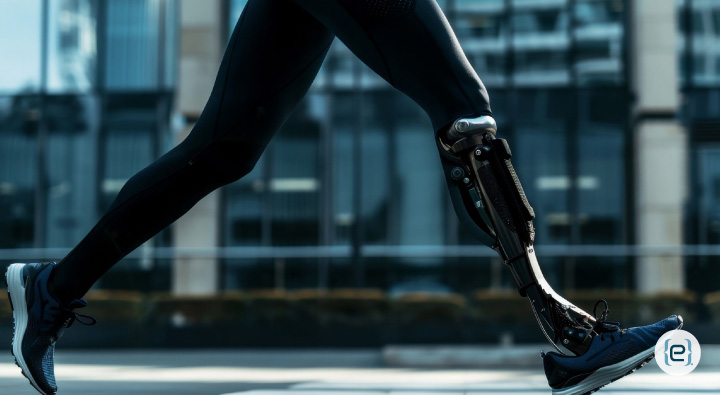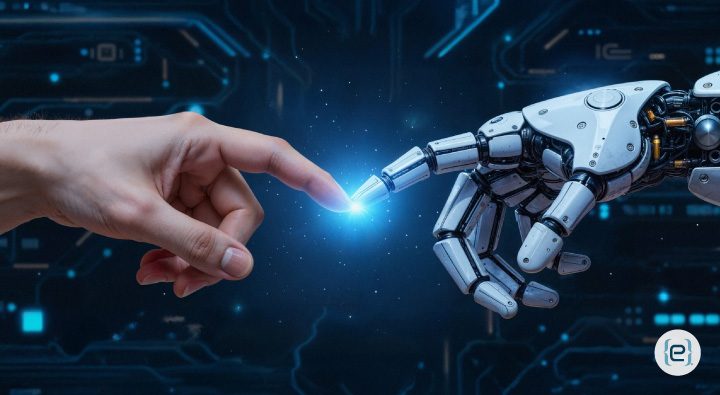Human augmentation is changing the way you live and work. It’s not about turning people into cyborgs. Instead, it’s about making your natural abilities even better. Think of it like giving your brain and body a boost.
Artificial intelligence plays a big role in human augmentation. AI and humans can team up to do amazing things, from making smarter choices to seeing and hearing better. This teamwork between people and machines is opening up new possibilities in many areas of life.
As this tech grows, it could shake up society in the years to come. Some worry about the risks, but many see the potential for AI to improve your daily life. It’s an exciting time, with lots of chances to make the world a bit brighter – or at least a bit more high-tech. Who knows, maybe one day you’ll have personal AI assistants to help you remember where you left your keys!
Fundamentals of Human Augmentation
Human augmentation aims to enhance your natural abilities through technology. It spans a wide range of approaches, from wearable devices to brain-computer interfaces.
- Defining Human Augmentation: Human augmentation refers to technologies that improve a person’s physical or mental capabilities. It can make people stronger, faster, or smarter than they would be naturally. These technologies come in many forms. Some are external, like exoskeletons that boost strength. Others are internal, such as brain implants to help with memory. The goal is to push past normal human limits. This could mean running faster, thinking clearer, or even sensing things you normally can’t.
- History and Evolution of Human Augmentation: People have tried to boost their abilities for centuries. Early examples include eyeglasses and prosthetic limbs. The modern era of human augmentation kicked off in the 1960s. Scientists began exploring how technology could enhance human performance. Big leaps came with the digital age. Computers and the internet gave us new ways to access information and boost our brainpower. Today, we’re seeing rapid progress. Artificial intelligence and advanced sensors are opening up new possibilities. We can now control devices with our thoughts or see in the dark.
Types of Human Augmentation
There are several main types of human augmentation:
- Physical: Enhances strength, speed, or endurance. Examples include powered exoskeletons and advanced prosthetics.
- Sensory: Improves or adds new senses. This could be night vision goggles or implants to restore hearing.
- Cognitive: Boosts mental abilities like memory or focus. Brain-computer interfaces are a key technology here.
- Genetic: Alters DNA to enhance traits or prevent diseases. This is still mostly theoretical but advancing quickly.
Each type has its own set of technologies and challenges. Some are already in use, while others are still being developed.

Interfacing AI with Human Augmentation
AI and human augmentation are coming together in exciting ways. This blend is changing how you think, work, and live. Let’s explore how AI interfaces with human abilities, the hurdles we face, and what’s on the horizon.
- AI in Enhancing Human Abilities: AI helps boost human skills in many areas. It can make your senses sharper and your mind quicker. For example, AI-powered hearing aids can filter out noise and focus on important sounds. This helps people hear better in noisy places. AI also aids memory. Smart assistants remind you of tasks and appointments. They can even suggest info you might need based on your schedule or location. In decision-making, AI analyzes data faster than humans. It spots patterns you might miss. This combo of AI speed and human insight leads to better choices in fields like medicine and finance.
- Integration Challenges: Mixing AI with human abilities isn’t always smooth sailing. One big issue is making sure AI and human parts work well together. The tech needs to be easy to use and feel natural. Privacy is another concern. AI systems often need lots of personal data to work well. But people worry about who sees this info and how it’s used. There’s also the question of reliance. If you depend too much on AI, you might lose some of your natural skills. It’s like how some folks can’t do math without a calculator now. Lastly, there are ethical worries. Who’s responsible if an AI-human system makes a mistake? These are tough questions we need to answer.
Future Prospects and Innovations
The future of AI and human augmentation looks bright. Scientists are working on brain-computer interfaces. These could let you control devices with your thoughts! AI might help you learn faster too. Imagine a system that knows exactly how you learn best and adjusts lessons just for you. In health, AI could monitor your body 24/7. It might catch problems before you even feel sick. This could lead to longer, healthier lives. There’s even talk of AI helping us explore space. It could manage life support systems and help astronauts make quick decisions in tough spots. As a joke, maybe one day AI will help you remember where you put your keys – that’d be a real game-changer!
Conclusions
Human augmentation and AI are coming together to enhance your abilities. This exciting field combines tech and biology in new ways. It aims to improve how you sense, act, and think. AI isn’t replacing humans. Instead, it’s helping you do more. Smart machines work alongside people, not instead of them. This team-up makes both AI and humans stronger. The goal is to create tech that works well with people. Explainable AI helps humans understand and trust these systems. This builds a true partnership between human and artificial smarts. As the field grows, so do the possibilities. You might see improved senses, stronger bodies, or sharper minds. But it’s not all science fiction – some of this tech exists today. Ethics matter too. You need to think about how these changes affect society. The future looks bright, but you should move forward carefully.
In the end, human augmentation and AI offer a world of potential. They could solve big problems and unlock new human abilities. The key is finding the right balance between human and machine. Contact eMazzanti today to learn how we can help you harness the power of AI and human augmentation.







